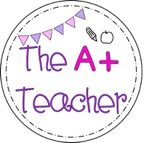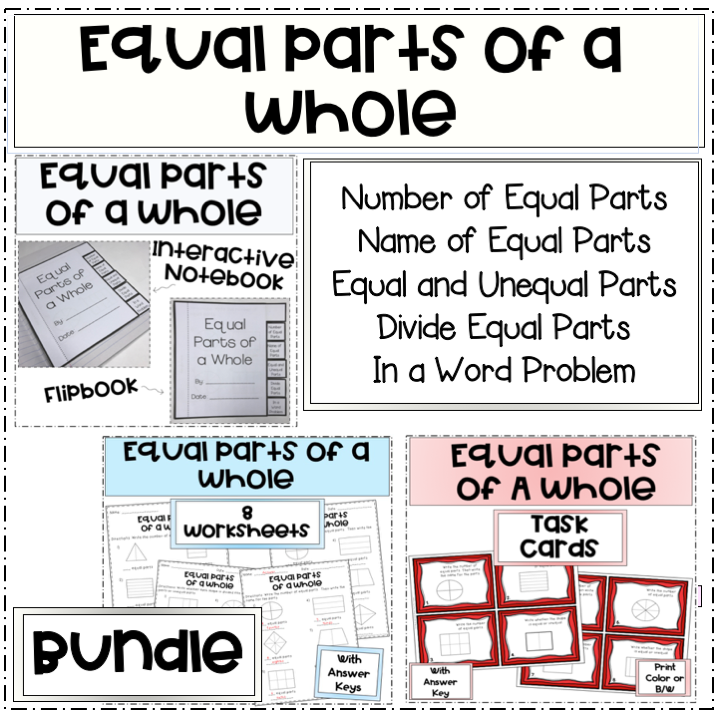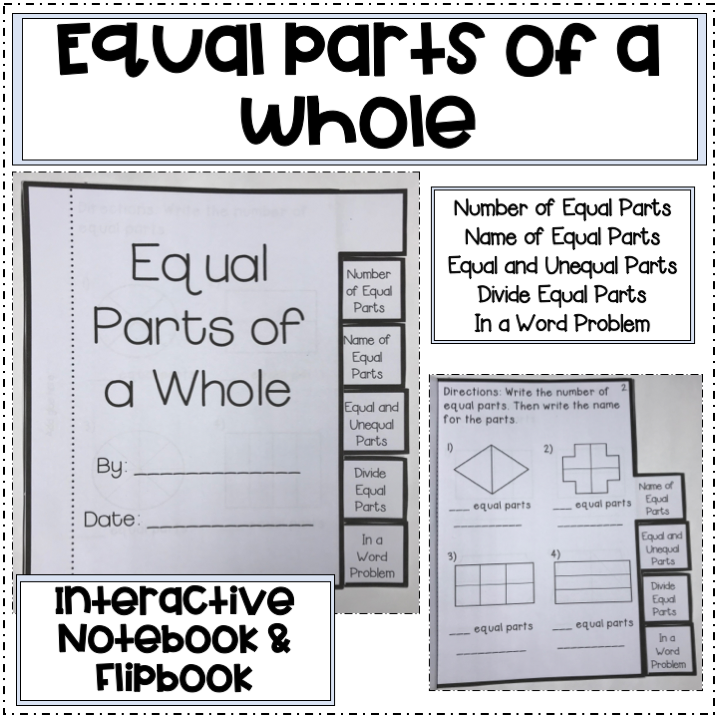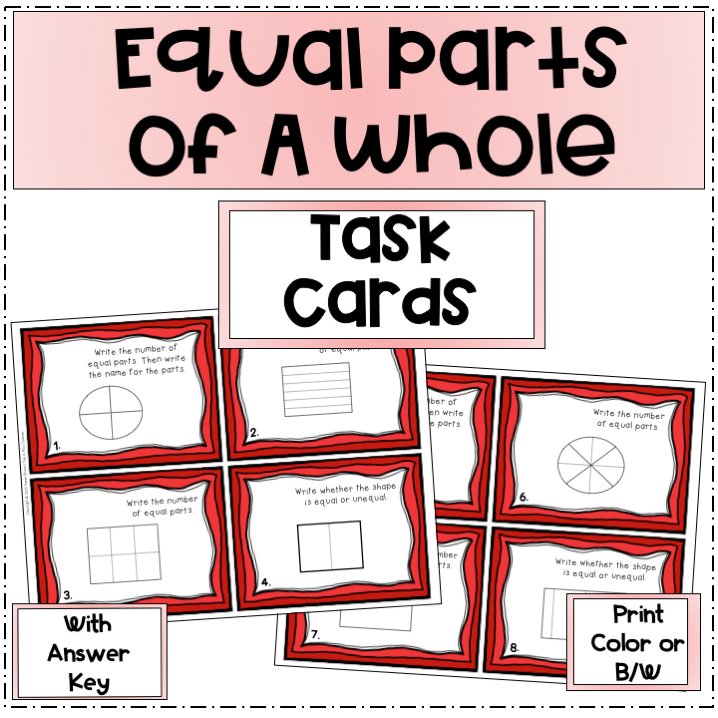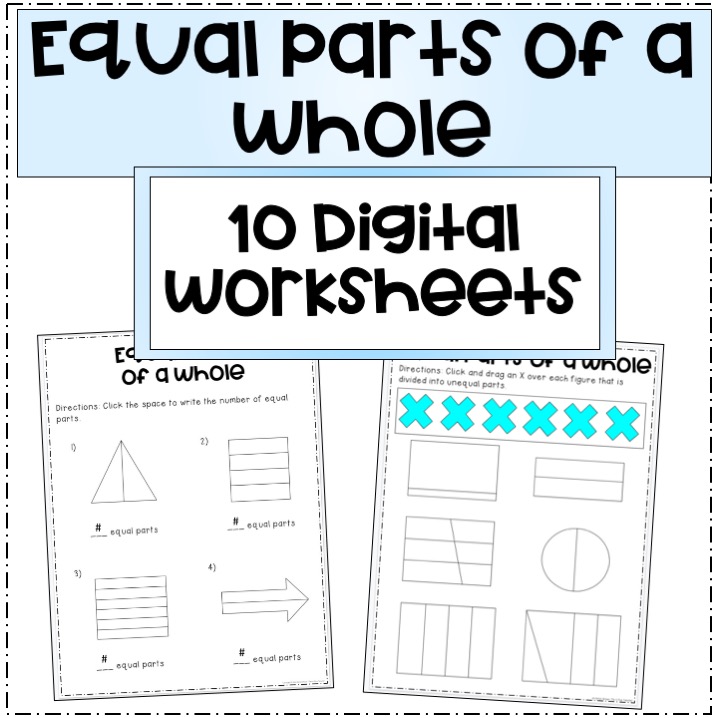How to Make Math Fun With Equal Parts of a Whole
Make learning math fun and engaging with different math centers! I love using an interactive flipbook and task cards to make learning equal parts of a whole fun and engaging!
I love making math fun and engaging, especially when introducing fractions to my students!
Real-Life Examples
First, when introducing fractions, I always begin with real-life examples. I use real-life examples to model equal wholes and equal parts of a whole. For example, I’ll show the meaning of equal parts of a whole by using real-life pictures or hands-on materials to represent cookies, brownies, pizza, string, colored shapes, different colored crayons, different colored markers, and more! I inform the class that we are going to learn about fractions and I first present real-life examples by modeling the fractions that represent each object.
As an example, I model the meaning of counting parts of a whole by counting the number of blue markers in an entire set of markers. Then I model how to count the whole by counting how many markers there are in all. I’ll write a fraction that represents the number of blue markers in a set of markers. Then I’ll model representing fractions for different scenarios such as representing pizza slices or shaded parts of different shapes.
Interactive Whiteboards
When I introduce the new math concept with students, I love to use whiteboards to get students involved in the learning practice. Students demonstrate an understanding of the concept by writing on their whiteboards. Student volunteers model the concept for peers on the board. This time is great as a quick form of assessment to determine which students may need further assistance. I’ll write student numbers on a post-it as a quick and easy way to organize small groups for reinforcement.
Hands-on Learning
The hands-on learning activities are a part of math centers in order to further reinforce the learning of equal parts of a whole. Students review by completing an interactive flipbook and task card scavenger hunt. Both activities provide students an opportunity to demonstrate an understanding through an alternative to completing worksheets.
Equal Parts of a Whole Interactive Flipbook
Students complete an interactive flipbook to reinforce learning and demonstrate an understanding of equal parts of a whole. The flipbook is great to review a number of equal groups, names of equal parts, equal and unequal parts, and in a word problem.
Equal Parts of a Whole Task Cards
Students love completing a task card scavenger hunt during math centers to review the math concept. The task cards are a part of math centers to review equal or unequal parts and to identify the number of equal parts. In addition, the equal parts of a whole worksheets are great for extra practice in a math center.
That’s how I make math fun and engaging when teaching equal parts of a whole!
Equal Parts of a Whole Digital Slides
Students love completing interactive digital slides during math centers to review math concepts. The interactive digital slides are a part of math centers that review equal or unequal parts, the name of parts, and the number of equal parts. In addition, the digital equal parts of a whole interactive slides are great for extra practice in a math center or for remote learning.
Interested in other ways to make math fun and engaging? Check out my blog post about reviewing prime and composite numbers. Check out my online store to view additional resources that help make math fun and engaging.
Thanks for reading! 
